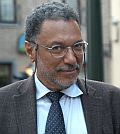RECONNECT HYDROLOGY & ECOLOGY TO MOVE TOWARDS RESTORATIVE DEVELOPMENT: An understanding of Daniel Pauly’s “Shifting Baseline Syndrome” is a foundation piece for turning the clock back to replicate desired creekshed conditions

A shifting baseline (also known as sliding baseline) is a type of change to how a system is measured, usually against previous reference points (baselines), which themselves may represent significant changes from an even earlier state of the system. “Every generation will use the images that they got at the beginning of their conscious lives as a standard and will extrapolate forward. And the difference then, they perceive as a loss. But they don’t perceive what happened before as a loss,” stated Daniel Pauly. “And the question is, why do people accept this? Well because they don’t know that it was different.”



